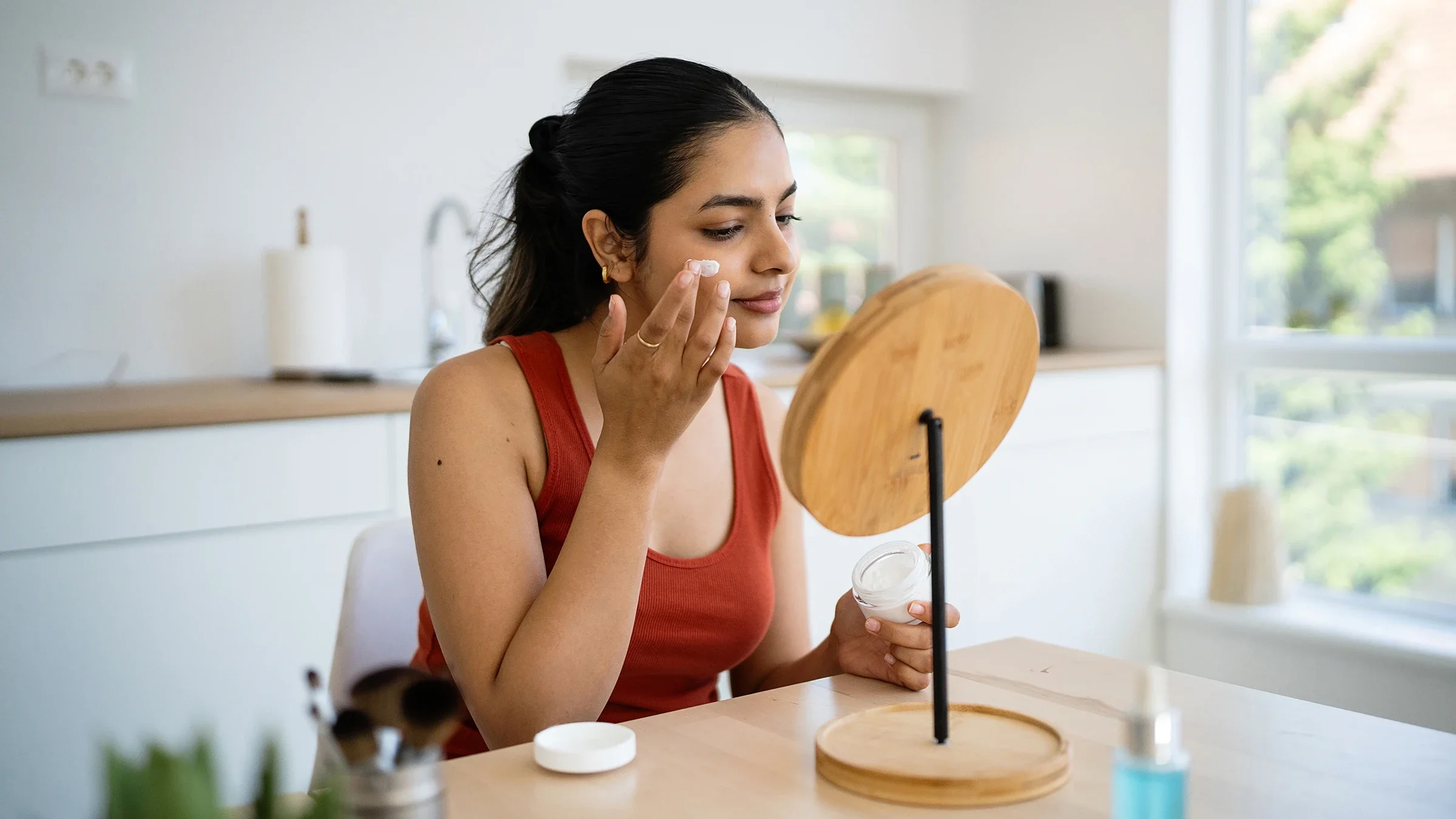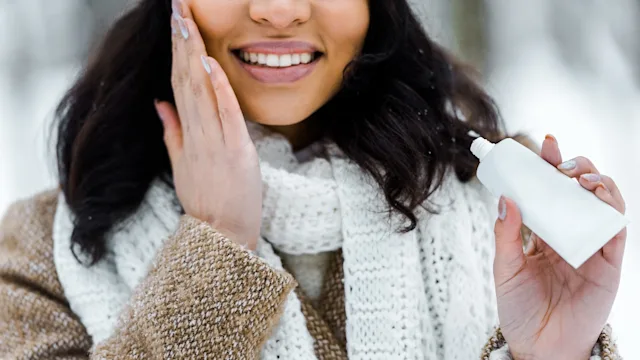Key takeaways:
Snail mucin is the lubricating slime that snails produce to help them move. It’s become popular in skin care because it contains hydrating ingredients, antioxidants, and peptides.
Using snail mucin regularly may help the skin in many ways, like improving dryness and protecting skin from environmental stress and irritants.
Using snail mucin is safe for most people and skin types.
Snail mucin is becoming more popular as a skin care ingredient, especially in Korean beauty products. But is snail mucin good for skin, or is it just a skin-care gimmick?
Let’s take a look at what the evidence says about snail mucin, and how you can incorporate it into your skin care routine.
What is snail mucin?
Snail mucin is the slime that snails produce in a gland located in the front part of their foot. Think of mucin as the lubricant that helps them move, stay hydrated, and keep their skin protected.
Search and compare options
Since snail mucin helps protect and heal snail skin, scientists wondered whether it could benefit human skin, too. So far, the available research points to yes.
In skin care products, you'll usually find snail mucin sold as a serum or an “essence." An essence is a lightweight, water-based product that feels similar in texture to a toner. You can also find moisturizers or masks that contain snail mucin as an ingredient.
Is snail mucin good for skin?
Snail mucin contains many compounds that may boost skin health. Let’s take a look at three of snail mucin’s benefits for skin.
1. Delivers hydration
Snail mucin has many potential roles in skin health, but it may be best known for its ability to keep skin hydrated. That’s because it contains humectants. These are ingredients that act as water magnets for your skin. Humectants pull moisture from the air and from the deeper layers of your skin and deliver it to the surface of your skin.
The humectants in snail mucin include:
Hyaluronic acid: This well-studied hydrator attracts and retains water. In fact, it can hold up to 1,000 times its volume in water. This is how hyaluronic acid helps lock in moisture to keep skin plump.
Glycolic acid: Glycolic acid may be best known as an exfoliator. But it also helps keep skin moisturized. It does this by increasing the amount of hyaluronic acid the body produces.
Allantoin: Allantoin is a naturally-occurring compound that has moisturizing and soothing properties. It helps keep skin hydrated, and calms redness and irritation.
Foods and drinks for glowing skin: Blackberries, salmon, and almonds are just a few of the foods that may help keep your skin healthier and more youthful-looking.
What is the “skin barrier?” It’s the outermost layer of your skin that holds in water and oils and keeps out irritants and toxins — and there are ways to strengthen the skin barrier.
How often should you exfoliate your face? Each person’s routine will vary depending on skin type, skin conditions, and goals. Learn what’s right for you.
When your skin is hydrated, it feels softer, looks more supple, and reflects light more evenly. Hydrated skin also strengthens your skin barrier. This means your skin can better protect itself — and your body — from irritants and environmental stress.
2. Supports smoother skin
There are a few different ways snail mucin may help make your skin look smoother over time.
Research suggests that snail mucin reduces transepidermal water loss (TEWL). TEWL is the water your skin loses through evaporation each day. When your skin holds onto more water, it looks plumper and smoother.
And snail mucin contains skin-smoothing ingredients, such as:
Collagen and elastin: Collagen and elastin are two proteins that help with skin elasticity.
Peptides: These amino acids support collagen production.
Antioxidants: Antioxidants fight off unstable molecules called free radicals. When too many free radicals build up in the body, they can damage cells and speed up visible aging.
3. Helps skin repair
The compounds in snail mucin, including allantoin, support the skin’s natural repair process. That makes it especially helpful for people dealing with breakouts, sensitivity, or skin that just feels stressed. Snail mucin may speed up wound-healing and improve skin recovery after treatments, like laser or chemical peels. And a review suggests that snail mucin can improve the look of scars, including acne scars.
4. Calms inflammation
Snail mucin’s antioxidants and glycoproteins have anti-inflammatory properties that may reduce redness, soothe irritation, and even help with eczema. And snail mucin's natural antimicrobial properties may help fight acne-causing bacteria.
How to use snail mucin for skin care
Snail mucin is compatible with most other skin care ingredients. If you’re curious about adding it to your skin care routine, here are the basic steps for morning and night use:
Start with clean, damp skin. Wash your face with a gentle cleanser, and lightly pat it dry. Humectants work better on damp skin (rather than fully dry skin).
Apply snail mucin. Apply snail mucin essence or serum by gently patting it into your skin.
Layer on your other products. After applying snail mucin, apply moisturizer right away to lock everything in. During the day, apply sunscreen after your moisturizer.
Remember: Be consistent with your skin-care routine, and give it time. You may notice certain benefits quickly, like improved hydration and smoother texture. Other benefits, like collagen support and a reduced appearance of fine lines, take longer. So, think in terms of weeks, not days.
Is snail mucin safe?
Most people tolerate snail mucin and don’t experience side effects. But, as with any skin ingredient, it’s possible to experience:
Redness
Irritation
Increased sensitivity
Fragrances are often added to snail-mucin products to mask the smell. It's often these fragrances that trigger a skin reaction. So, it's important to check ingredients, especially if you have eczema-prone or sensitive skin. To avoid skin reactions, it’s best to avoid snail mucin with fragrance.
Frequently asked questions
One isn't necessarily better than the other. The two serve different purposes. It’s well-established that retinol stimulates collagen and reduces the appearance of deeper wrinkles over time. Snail mucin’s benefits are more about hydration, skin barrier repair, and reducing the appearance of fine lines. Think of snail mucin as a complement to retinol, not a replacement.
Yes, it's okay to use snail mucin every day as part of your morning and evening skin routines. Using snail mucin daily is the best way to maximize results.
Snail mucin is collected in different ways. Many brands practice cruelty-free methods of extracting mucin from snails. But not all do. You can research a brand’s practices to learn more about their extraction method. Some companies are more transparent than others about their sourcing (and testing) methods.
One isn't necessarily better than the other. The two serve different purposes. It’s well-established that retinol stimulates collagen and reduces the appearance of deeper wrinkles over time. Snail mucin’s benefits are more about hydration, skin barrier repair, and reducing the appearance of fine lines. Think of snail mucin as a complement to retinol, not a replacement.
Yes, it's okay to use snail mucin every day as part of your morning and evening skin routines. Using snail mucin daily is the best way to maximize results.
Snail mucin is collected in different ways. Many brands practice cruelty-free methods of extracting mucin from snails. But not all do. You can research a brand’s practices to learn more about their extraction method. Some companies are more transparent than others about their sourcing (and testing) methods.
The bottom line
Snail mucin is a science-backed skincare ingredient. It delivers hydration, aids in skin healing, and offers anti-aging support. Though more robust clinical trials are needed, current evidence supports its use, especially to address skin dryness, fine lines, and irritated or inflamed skin. For best results, incorporate snail mucin into a regular skin care routine.

Why trust our experts?



References
Aflatooni, S., et al. (2023). Snails and skin: A systematic review on the effects of snail-based products on skin health. Journal of Integrative Dermatology.
Juncan, A. M., et al. (2021). Advantages of hyaluronic acid and its combination with other bioactive ingredients in cosmeceuticals. Molecules.
Narda, M., et al. (2020). Glycolic acid adjusted to pH 4 stimulates collagen production and epidermal renewal without affecting levels of proinflammatory TNF‐alpha in human skin explants. Journal of Cosmetic Dermatology.
Rashad, M., et al. (2023). Biological activities of gastropods secretions: Snail and slug slime. Natural Products and Bioprospecting.
Rashad, M., et al. (2025). From nature to nurture: The science and applications of snail slime in health and beauty. Journal of Cosmetic Dermatology.
Ricci, A., et al. (2023). Snail slime extracted by a cruelty-free method preserves viability and controls inflammation occurrence: A focus on fibroblasts. Molecules.
Sarkar, P., et al. (2025). Emergence of snail mucus as a multifunctional biogenic material for biomedical applications. Acta Biomaterialia.
Shatzman, C. (2024). Snail mucin and eczema. National Eczema Association.
Singh, N., et al. (2024). Snail extract for skin: A review of uses, projections, and limitations. Journal of Cosmetic Dermatology.














